Honestly, nothing prepared me for just how cold Teruel gets. I always pictured Spain as a land of endless sun and gentle winters, but Teruel? It completely shattered that idea with its biting wind and icy mornings.
Still, with a bit of planning and some practical tips, I found winter in Teruel not just manageable, but genuinely fun and memorable.
There’s a certain magic to strolling Teruel’s old streets when the air stings your cheeks and the city feels wrapped in its own quiet. I bundled up, grabbed a hot drink, and realized the winter cold actually adds to Teruel’s charm.
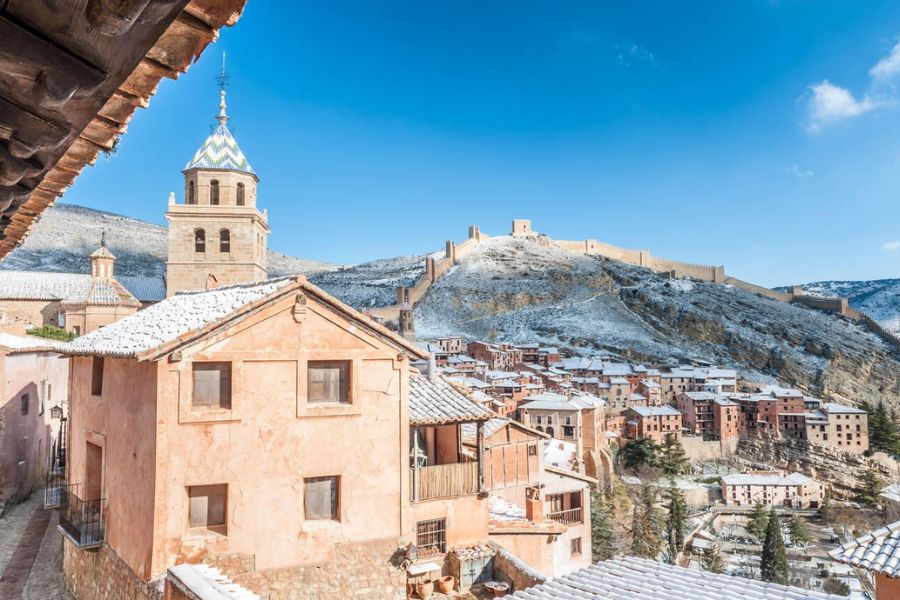
If you’re curious about a different side of Spain, stick with me—I’ll show you how to handle the Teruel chill and still enjoy every minute.
Preparing for the Teruel Chill: What to Pack and Expect
Winter in Teruel means crisp air, sharp winds, and a slice of Spain most people never see. You’ll need to prepare for temperature swings, icy streets, and a few old-fashioned quirks.
But with a bit of effort, it becomes a rewarding adventure.
Winter Weather Realities in Spain’s Coldest Provincial Capital
Teruel really lives up to its title as Spain’s coldest provincial capital. Nights often drop below freezing, and the wind doesn’t mess around—it cuts right through your clothes.
I remember feeling shocked at how much colder it was than other Spanish cities I’d visited in winter.
The sun sometimes takes the edge off during the day, but mornings and evenings stay chilly. You might spot icy sidewalks or even a few snow flurries.
Don’t expect snowplows everywhere—sometimes you just have to walk carefully and take your time.
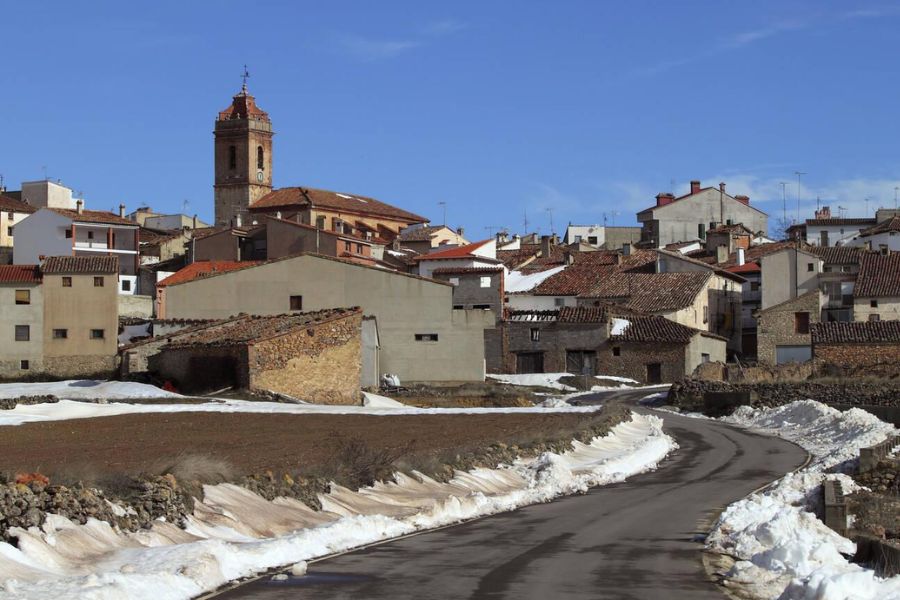
Teruel mixes modern comforts, like toasty hotels and cafés, with historic buildings and narrow lanes that don’t always hold in the heat. Life moves slower, and people seem to look out for each other a bit more in the cold.
Essential Clothing and Gear
If you’re packing for Teruel in winter, get ready for real cold—not just a light chill. I always reach for a warm, insulated jacket—something that blocks the wind is a must.
Underneath, layers are everything: thermal shirts, sweaters, and thick jeans or pants.
Packing checklist:
| Item | Why It’s Needed |
|---|---|
| Warm coat | For wind and freezing temps |
| Thermal base layer | Keeps you warm without bulk |
| Gloves & hat | Essential for icy mornings |
| Scarf | Shields your neck from cold winds |
| Wool socks | Keeps feet dry and warm |
| Waterproof shoes | Streets can be slippery or slushy |
| Umbrella | Occasional rain or snow |
I always toss in a reusable water bottle because heated rooms dry me out fast. Travel-size lotion and chapstick help too—the cold air can be brutal on skin and lips.
Tips for Staying Comfortable During Your Visit
A little preparation makes a huge difference in comfort. I dress in layers so I can peel things off when I duck into a warm restaurant or café.
Taking a break for a hot drink, even just for a few minutes, does wonders for my mood.
I usually carry a small daypack with gloves, an extra scarf, my water bottle, and a portable phone charger—cold weather zaps batteries way faster than I expected.
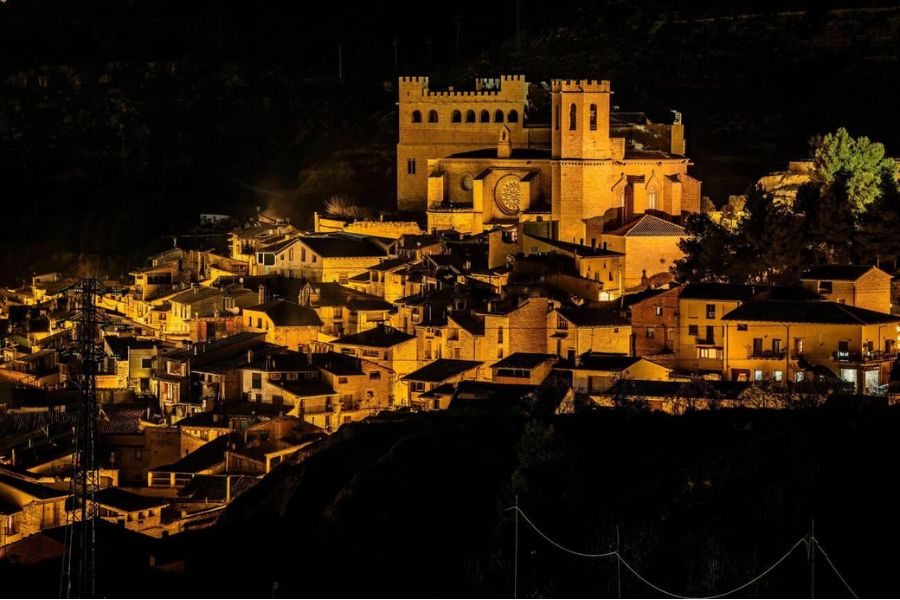
Sometimes, icy sidewalks or slow buses make the day run long. I try to roll with it and just enjoy the slower pace.
Seeing locals bundled up made me feel like I was part of the winter crew. I took time to soak in the city’s warmth, inside and out—even if it meant slowing down and matching Teruel’s winter rhythm.
Savoring Teruel’s Unique Flavors and Warmth
Eating in Teruel during winter isn’t just about filling up—it’s a window into local life. The hearty food traditions and home-style recipes I found made the cold way easier to handle.
Traditional Dishes to Warm the Soul
After a chilly walk, nothing beats a steaming bowl of caldo (broth) or a plate of migas in a cozy tavern. Migas—fried bread crumbs with garlic, chorizo, and pork—quickly became my favorite comfort food.
Another standout is ternasco de Aragón, slow-roasted lamb with crispy skin and tender meat inside. Lentil stews and simple noodle soups pop up on most menus, often with homemade sauces or local veggies.
Every spoonful offers a bit of warmth and tradition.
For something sweet, I grabbed pastries stuffed with fig jam or almonds—perfect with hot chocolate. These treats show off Teruel’s deep roots in family recipes and history.
Must-Try Local Recipes and Ingredients
Teruel brings its own twist to every meal. Jamón de Teruel (cured ham) is famous across Spain, and I loved it sliced as a starter or stuffed into sandwiches.
Local figs are surprisingly sweet and flavorful; I tried them in salads and as jam. Sardines show up in tapas bars, usually grilled or with olive oil and peppers.
Even in winter, they add a little Mediterranean flair.
A lot of places serve homemade noodles, especially in soups and baked casseroles. These dishes tie back to local farming and use the best produce around.
Sometimes, the staff share a story or a family recipe, which feels pretty special.
Cozy Cafés and Where to Find Culinary Comfort
When my fingers felt numb, I’d slip into a small café to warm up. Around Torico Plaza, you’ll find cafés serving thick hot chocolate and local pastries.
I spent hours sipping coffee while locals chatted over churros and fig-jam croissants. Some cafés offer hot soup or bocadillos (sandwiches) with jamón de Teruel or sardines.
In the evenings, taverns fill up with people, and you can order hearty stews and local wine.
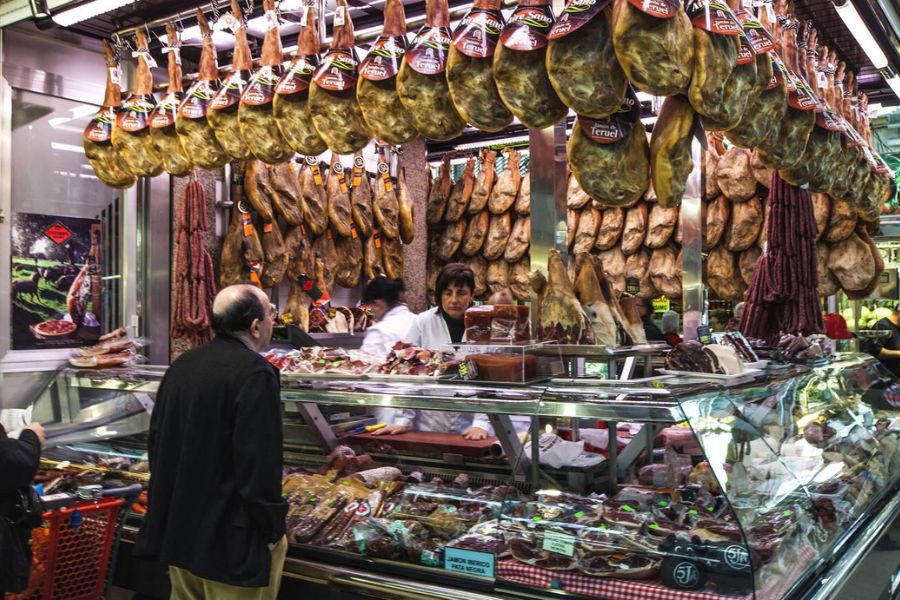
I noticed signs showing off ingredients from nearby Aragón farms or even Asturias. The food is simple but full of flavor, and the welcome feels genuine—Teruel’s food scene is as comforting as it is connected to its people.
Discovering Architecture, Art, and Stories in the Winter Quiet
Teruel in winter really lets its history and art shine. The cold air and quieter streets set the stage to notice every detail, from colorful Mudejar tiles to stone carvings of lovers.
Mudéjar Architecture: A Walk Through Teruel’s Past
Teruel’s Mudéjar architecture stands out for its blend of Islamic and Christian styles. I wandered the streets, breath puffing in the cold, and stared up at the bright ceramic tiles and intricate brickwork.
The Torre de El Salvador and the Cathedral of Teruel rise above the city as its most iconic landmarks.
Their arches and patterns do more than look pretty—they tell the story of Teruel’s cultural melting pot. Local builders borrowed ideas from both East and West.
Even on gray days, the mosaics and bricks seem to glow. I always stop to look up close at each tower—sometimes you’ll spot carvings or hidden symbols you’d miss in a crowd.
Seeing these places in winter, with barely anyone around, lets you catch all the little things—like the wind whistling through a centuries-old arch.
Art Forms and Sculptures in the City
Teruel’s public spaces are full of sculptures and art that celebrate its culture. In Plaza del Torico, I found the famous little bull statue—it’s much more charming in person than in photos.
You’ll see bold bronze and stone works next to painted tiles on the buildings.
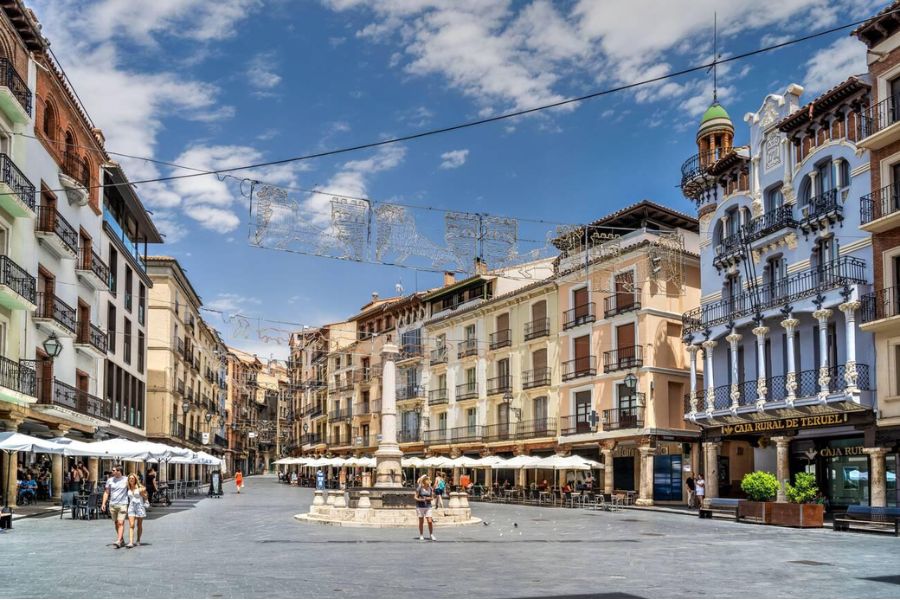
List of Notable Art Forms in Teruel:
- Ornate iron street lamps
- Painted wooden ceilings inside Mudéjar towers
- Decorative ceramic benches and tiles
- Modern sculptures, like the moving Lovers of Teruel statues
Every piece reflects Teruel’s love of mixing old and new. Even shop signs and hand-painted tiles add splashes of color to the winter streets.
A slower winter visit means you can really take it all in.
Literature, Local Legends, and Fascinating Personalities
People call Teruel the “City of Lovers” for a reason. The tragic love story of Diego de Marcilla and Isabel de Segura shows up everywhere—busts and carvings pop up around the city, especially near the Mausoleum of the Lovers in San Pedro Church.
I found these stories weren’t just museum pieces. Street art, murals, and even carved benches celebrate Teruel’s legends and writers.
Locals talk about these tales with pride, and if you hang around a café, someone might share their favorite version.
A Personal Encounter With Teruel’s Hidden Masterpieces
One frosty morning, I wandered off the main street and ducked into a tiny chapel. Inside, painted altars and detailed woodwork surprised me—most tourists just walk by.
The cold and quiet made me feel closer to the art, with no crowds or noise.
I started making a list of hidden masterpieces to find:
| Hidden Gem | Location | Why Visit |
|---|---|---|
| Chapel of San Pedro | Near Lovers’ Mausoleum | Lavish painted altars |
| Small stone carvings | Side alleys | Unique faces and figures |
| Decorative tile panels | Residential streets | Bright colors, folk patterns |
Taking my time, I noticed how even small details tell stories about Teruel’s past. Each discovery felt like a secret only winter visitors get to share.
Exploring Beyond Teruel: Day Trips and Surrounding Regions
Winter in Teruel isn’t just about braving the city’s cold streets. It’s the perfect season to explore nearby villages, dramatic landscapes, and maybe even set out on cross-regional adventures.

Getting out of the city led me to some real gems and winter scenes I won’t forget.
Visiting Astounding Villages and Nature Spots
I kicked off my trips with a visit to the medieval village of Albarracín, just a short drive from Teruel. Its red houses and winding lanes looked magical with a dusting of snow.
Walking along the old city walls, I watched the colors shift in the winter sun.
Next, I stopped by Mora de Rubielos and Rubielos de Mora. Both towns have impressive castles and peaceful squares.
In winter, hardly any tourists show up, so I wandered in near silence. It felt extra special.
If you’re into nature, the Sierra de Albarracín mountains and the nearby pine forests are perfect for hiking or just soaking up the frosty views. The air is crisp, and sometimes you get the whole trail to yourself.
Top Villages Near Teruel
| Village | Main Attraction |
|---|---|
| Albarracín | Medieval streets, city walls |
| Mora de Rubielos | Hilltop castle |
| Rubielos de Mora | Historic architecture |
Regional Road Trips: From Catalonia to Aragón
Driving out of Barcelona toward Teruel gave me a totally different feel than just hanging out in the city. The road stretches through Catalonia into Aragón, and honestly, you can’t help but notice how the scenery goes from breezy coastline to rugged mountains.
I set out for a one-day road trip, starting in Tarragona, still in Catalonia, before making my way to Teruel. That shift from the warm, salty air by the sea to Aragón’s colder, dry wind hit pretty hard, especially in January.
The roads felt almost empty—great for pulling over at tiny towns or catching a view over dramatic hills. At a couple of rest stops, I ran into other travelers, most escaping to Aragón for winter or heading even further, maybe Asturias or Galicia. These long drives really connect you to northern Spain’s landscape and culture in a way that’s hard to explain.
Suggested Driving Route:
- Barcelona → Tarragona (Catalonia)
- Tarragona → Alcañiz (gateway to Teruel)
- Alcañiz → Teruel City
Comparing Teruel’s Winter to Other Spanish Destinations
I’ve seen a few of Spain’s famously chilly places, but Teruel’s winter stands out. Asturias and Galicia stay wet and green, but Teruel? It’s cold, dry, and snow isn’t unusual. Portugal or Estremadura get more rain and milder temperatures, so it’s not the same at all.
Barcelona barely ever sees snow, and it’s way warmer. In Teruel, the cold feels sharper—walking through town at dawn, I really felt it. I had to pack thick layers, gloves, and a warm hat. Still, the city feels cozy. I found cafés with fireplaces and friendly locals happy to chat.
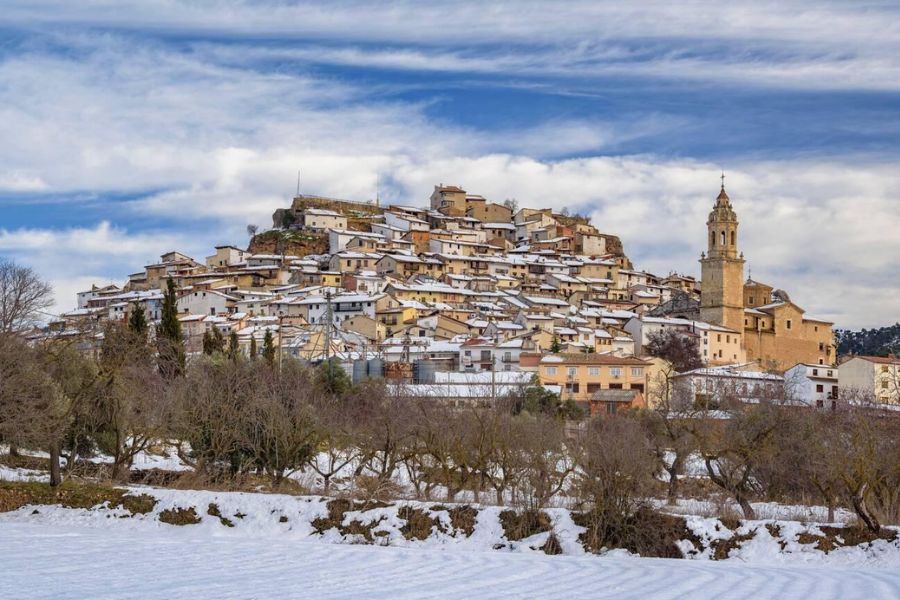
That mix of unique weather and winter quietness made every little trip from Teruel—whether I headed to a neighboring region or just a sleepy village—feel like a real adventure. I started to appreciate how winter gives each corner of Spain its own vibe.
Embracing Teruel’s Rich Social History and Community Spirit
Teruel isn’t just about cold winds and old towers. The city’s history—full of struggles for justice, unity, and memory—really shaped my visit. Digging into these stories helped me see the people behind the beautiful scenery.
Militia, Politics, and Stories of the Working Class
Walking around Teruel, I kept bumping into reminders of the 20th century. The city stood at the heart of deep divides—fascism and political activism were just part of life. I found traces of working-class pride in old plaques and local museums, and shopkeepers shared stories about grandparents who fought as militia or just tried to get by during the Second World War.
Locals talk about how communists, anarchists, and other groups shaped Teruel’s past. They haven’t forgotten the violence between those groups and the powerful bourgeoisie. Stories of anti-Semitism and social inequality come up too, but people in Teruel supported each other however they could.
One bar in town has old photos on the wall—demonstrations, workers’ marches, moments frozen in time. I loved how even a simple chat in a café could open up these stories, making the city’s struggles feel close and personal.
Cultural Events and Modern Traditions
Even in the dead of winter, Teruel comes alive with cultural events that celebrate resilience and community. I joined a small festival in the main square—there was live music, dancing, and families laughing under outdoor heaters. Locals told me these gatherings have been going for generations, mixing modern fun with old traditions of unity.
A local favorite is the Fiestas de la Vaquilla, with parades, music, and costumes that honor working-class roots. Events like this really show off Teruel’s inclusive community spirit.
Younger folks seem proud to keep these customs going—they’re not just history, they’re part of daily life. When I joined a cooking class, people shared recipes passed down from times when food was scarce. Those little moments reminded me how much endurance and hope are wrapped up in Teruel’s traditions.
Freedom, Equality, and Lessons From the Past
Teruel’s memories of struggle really stick with me. Freedom and equality aren’t just lofty ideas here—they’re things people actually live through.
Locals love to share stories from the Second World War. They talk about how folks got pushed between fascism and the hope for something better.
You’ll hear these stories in quiet chats or spot them in local exhibits. Sometimes, I notice how residents highlight past injustice—against working people, minorities, or political groups—and how that history shapes their commitment to fairness and respect now.
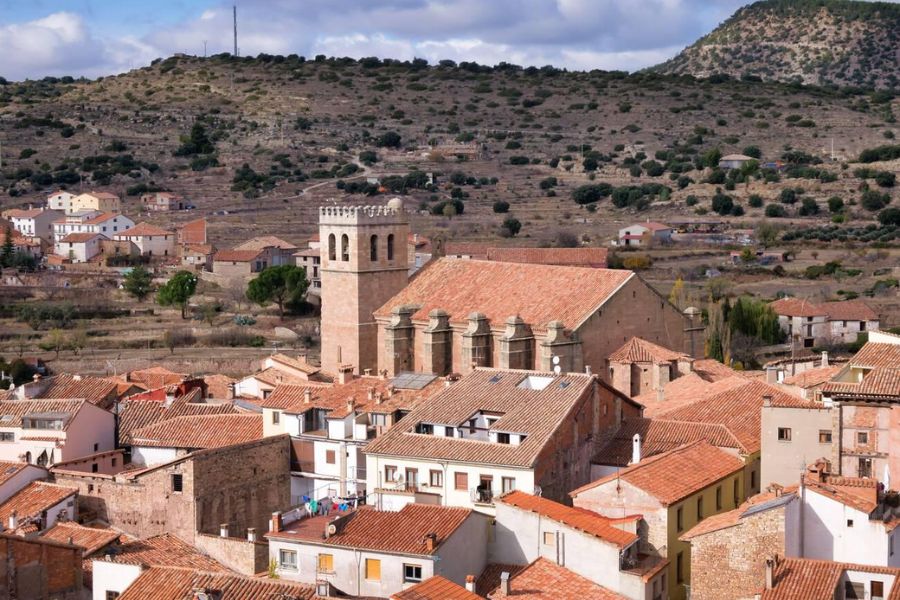
Posters about supporting refugees or celebrating civil rights pop up everywhere. It’s kind of inspiring.
For travelers, Teruel offers more than just sightseeing. When I stayed there during winter, I could feel how the old battles for equality and freedom still pull the community together.
There’s a real pride in these values, and you see it in everyday life. Whether it’s a small kindness at a bakery or a friendly gesture during a local festival, those hard-won principles show up in lots of little ways.

